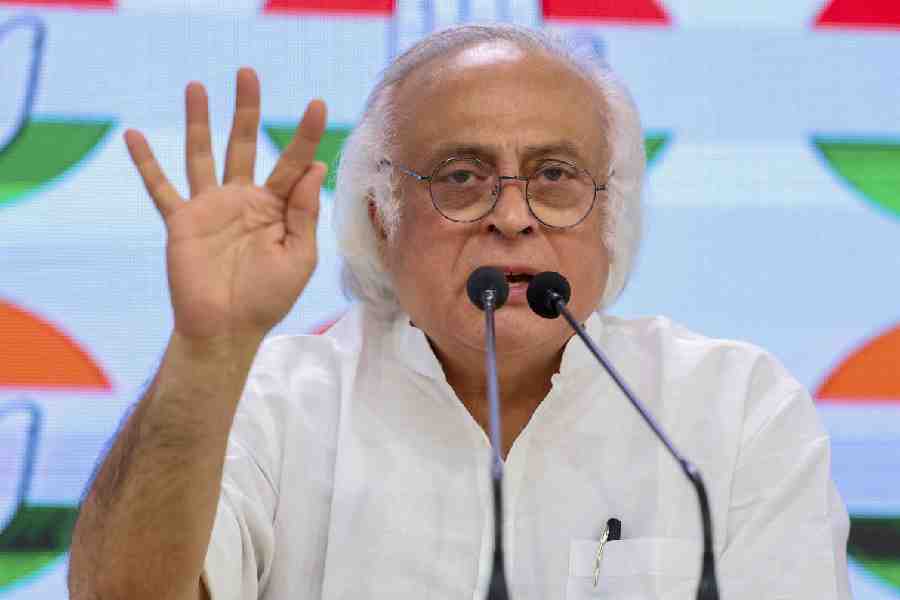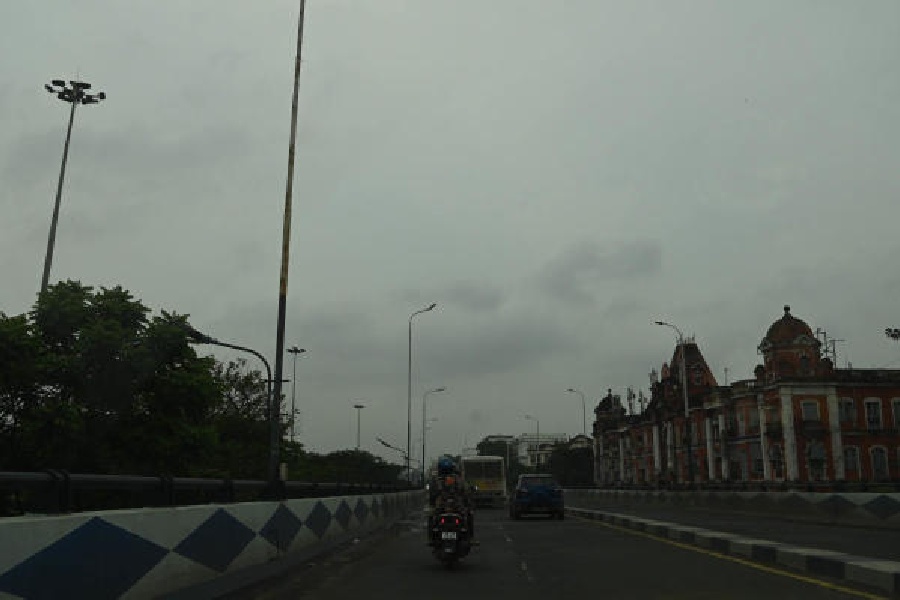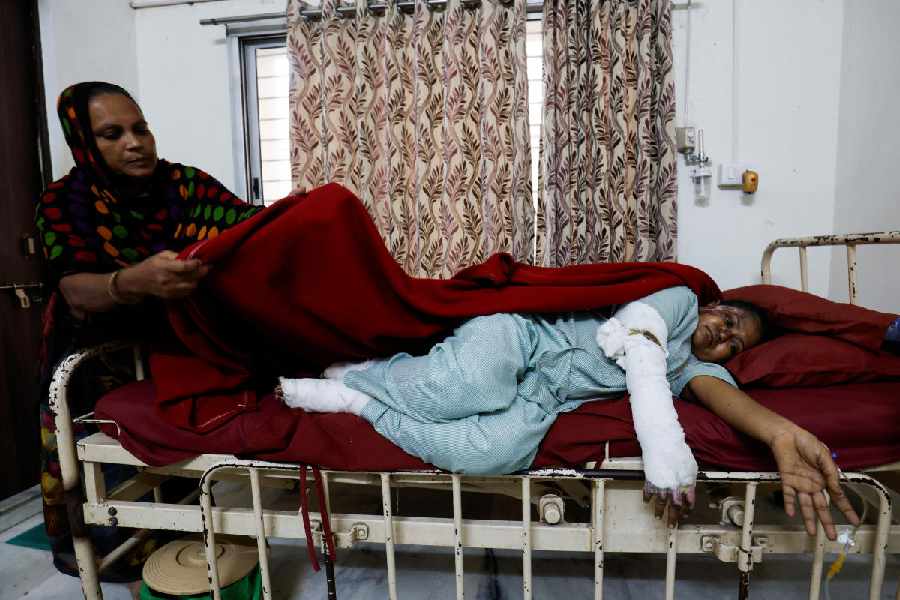 |
After the celebrations die down, the new government will have to grapple with the onerous task of rekindling faith among the youths that Bengal can reclaim its fading glory, clamber back into India’s Premier League of States after being relegated to the Second Division and offer hope for a brighter tomorrow.
The question is this: Can Bengal resurrect itself from the depths of despair like Shah Rukh Khan’s Kolkata Knight Riders? The KKR took the scalpel to its problems: it changed its leaders, virtually sacked the entire team and restored the chest-thumping pride in the team’s anthem — Korbo, Lorbo, Jeetbo Re — that had evoked derision for three years.
Can Mamata do the same for Bengal after three decades of Left rule?
Rajiv Gandhi once called Calcutta a dying city and recanted because of the howls of protest his comment evoked. But something more insidious has happened in the 30 years of Left rule: there’s been the Great Exodus of young talent. The youths have been fleeing the state in droves — in search of higher education, better-paying jobs and a new way of life.
It isn’t about criticism from outsiders anymore; it isn’t about changing perceptions about Bengal in the minds of investors scouting for lucrative opportunities — at least not yet. Right now, it’s about nursing a sclerotic state back to health and persuading the young — not the old — to stay back and have faith that Bengal can start winning again. It’s about pride; and it’s about fighting back.
It’s about turning the KKR anthem backwards: Jeetbo, Lorbo, Korbo Re.
Jeetbo — she has done that. Now can she deliver on the other two?
Fix the economy
The biggest challenge for Mamata will be to set the fiscal house in order. Some plainspeak here: It’s in a shambles.
Bengal today ranks with Kerala and Punjab as the only three states that are running a revenue deficit — that is, spending more than what they earn through taxes. It aggravates the problem with a fiscal deficit running at 3.8 per cent of its gross state domestic product (GSDP), which is one of the highest among the 17 categorised as general category states. Only Uttar Pradesh is worse off at 4.01 per cent.
Back in 2004-05, under pressure from the Centre, states had embarked on a rigorous regimen to bring about a modicum of fiscal rectitude. At that time, only four states - Bihar, Chhattisgarh, Karnataka and Madhya Pradesh - had a revenue surplus. Three years later, 14 states had achieved a revenue surplus, displaying the kind of discipline they had never shown before. The three profligates were Bengal, Kerala and Punjab.
There’s more: in 2004-05, 11 of the 17 frontline states had a fiscal deficit exceeding 3 per cent of the GSDP — which has been set as the ideal goal. By 2007-08, that number was down to five. The recalcitrant states were Goa, Kerala, Punjab, Uttar Pradesh and Bengal.
Bengal — along with Sikkim — did something worse: they set their face against the belt-tightening ritual that other states were adopting by refusing to pass a fiscal responsibility legislation that would have committed it to deep spending cuts.
The 26 states that enacted the legislation were entitled to a combined interest relief on loans taken from the Centre of about Rs 3,000 crore in the each of the five years since 2005-06. They also qualified for limited loan waivers as an incentive to follow the path of fiscal correction. Since Bengal chose to be the renegade, it lost out on these benefits.
It was only last year that Bengal enacted the legislation when it realised it could not afford to lose out on the course-correcting funds.
The Left’s profligacy leaves Mamata with the hard task of bringing its deficits under control.
The global recession in 2008 had forced a pause in the fiscal consolidation process for two years. The fiscal tightening will resume in 2011-12 — which means Mamata is actually getting into the hot seat just when the belt-tightening resumes.
The first test will be in being able to meet the immediate target of reducing the revenue deficit this year to 1.6 per cent in line with the recommendation of the Thirteenth Finance Commission.
Since Bengal faces a double whammy in deficits — a revenue deficit that currently stands at above Rs 16,000 crore and a fiscal deficit above 3 per cent of the GSDP — it will get more time to put its house in order. Bengal must eliminate its revenue deficit by 2014-15.
Bengal’s revenue deficit as a percentage of gross fiscal deficit at 83.9 per cent is the highest among all states.
It will also have to cap its fiscal deficit at 3 per cent by 2013-14 — giving it a special, two-year extension of the deadline set for the other states.
Saumitra Dasgupta
Bank blight
If credit advanced by the banking sector is any indicator of a state’s economic prowess, Bengal ranks way behind other states.
The statistical appendix of the Bengal government’s own Economic Survey (2010-11) reveals that the state has a much lower credit-deposit ratio — the percentage of loans advanced in relation to the deposits mobilised by banks in the state — than industrially advanced states such as Gujarat and Maharashtra.
Bengal also ranks lower than agriculture-based states such as Kerala, Punjab, Tamil Nadu and Uttar Pradesh.
The Left Front has consistently slammed the banks for being tardy in providing credit to the state while being aggressive in raising deposits from the people in the state.
In their defence, the banks have always maintained that they would love to lend more but there isn’t a great appetite for credit in the state.
“Over the years, Bengal has become more dependent on agriculture. Unlike Gujarat and Maharashtra, there hasn’t been a great deal of industrialisation in this state. Moreover, the people in Bengal in particular are more savings-oriented and averse to borrowing. That’s why almost all banks have a very high percentage of CASA (current account and savings account) deposits. All these translates into a lower credit-deposit ratio in the state,” said a senior official of United Bank of India, the lead bank in the state-level banking committee in Bengal.
In rural Bengal, people have low credit absorption capacity because of small and fragmented landholding, say officials of the National Banking for Agriculture and Rural Development (Nabard).
“To improve the credit absorption capacity of people in the agriculture sector in the state, we have been promoting joint liability groups here, which is Nabard’s first such initiative in the country,” said N.S.P. Rao, chief general manager, Nabard.
“Under this scheme, eight to 10 small and marginal farmers can come together and form a joint liability group so that it becomes convenient for commercial banks to lend money against land securities of such groups,” he added.
Landholdings in the state have become smaller and fragmented, with a lot of land lost in separating individual landholdings after the land reforms initiated by the Left.
Visitors to the state often express surprise that if Bengal is really an agricultural state, why don’t they get to see any tractors on the farms. The truth is that the landholdings have become too small to allow for mechanisation, thereby reducing the credit absorption capacity of the small and marginal farmers.
In the early eighties, the state was rocked by agitation when bank employees had vehemently opposed automation in the industry. If those Luddites had their way, the benefits of core banking and the ubiquitous ATMs would never have happened.
Calcutta was the home of the Imperial Bank of India — the precursor to the State Bank of India. Over the years, there has been a steady erosion in its importance as a banking centre. Almost a decade ago, the SBI had created a stir when it shifted its prestigious foreign exchange department and the entire process of balance sheet preparation to Mumbai.
Srikumar Bondyopadhyay
Just a dribble
Investors have poured more promises than money into Bengal. The state has a pretty poor strike rate when it comes to converting investment intentions into actual projects.
To be fair, Buddhadeb Bhattacharjee had pulled out the stops and actively sought investments in the state after winning the Assembly elections with a record majority five years ago.
The big-ticket investment that generated as much hype as heat was Ratan Tata’s Nano project, which was announced just four days after the Left Front's electoral triumph in May 2006.
Within a year — and after wresting a fistful of concessions — the Nano project ran into a gridlock sparked by frenzied protests over land acquisition at Singur.
There was a clutch of other big investment proposals — notably Indonesian Salim Group’s chemical hub, Sajjan Jindal’s JSW Bengal, the Bhushan Steel plant, and Videocon’s steel and power combo — that held out the promise of creating jobs and igniting an industrial renaissance in the state. But none of these projects has got off the ground.
The Nano pullout and agitation over land acquisition spoiled the party for Buddha’s fervent industrialisation drive. Two large projects made some headway in the last five years — an airport city project at Andal, Burdwan, by a consortium where Changi is a strategic investor and a gas-based fertiliser plant by the Matix Group.
Most of the prospective investors have put their projects on hold, waiting to see how the post-poll situation plays out.
Local entrepreneurs, who understand the situation on the ground a lot better, have pressed on with their plans. For instance, CESC is all set to build a power plant at Haldia. Harsh Neotia has set up a business park, a new hotel at Rajarhat and is planning a few more in the hills.
Those who had invested over the years have also expanded operations: Haldia Petrochemicals, Mitsubishi PTA, and Indian Oil Corporation. Bengal became the largest beneficiary of the Steel Authority of India Ltd (SAIL) expansion programme that virtually rebuilt Burnpur Steel Plant, formerly IISCO, and made a significant investment in Durgapur. SAIL will also build an iron nugget plant at Alloy Steel Plant.
The question that everyone will ask sooner or later is this: Will the new government be able to drum up investment after Mamata’s campaign to scuttle the Nano and the chemical hub projects? And will the dust settle on the land acquisition debate quickly enough to persuade investors to put their money where their mouth is?
Sambit Saha
Signal weak
July 31, 1995, will go down as the red-letter day that marked India’s tryst with the mobile revolution. That’s the day that Bengal’s then chief minister Jyoti Basu made the first cellular mobile call when he hooked up with telecom minister Sukh Ram — and Calcutta became the first metro to have a cellular network.
In today’s world of choked airwaves and the frustration over dropped calls, it’s hard to imagine the breathless excitement that Basu and Sukh Ram had sparked on Modi Telstra’s MobileNet cellular network with clunky handsets.
Communists love talking about revolutions but it must be fair to say that even Basu had no idea then of the revolution he had ignited with that call from Writer’s Buildings.
Modi Telstra had lashed together some telecom equipment to be able to patch through the first mobile phone call in India even as rivals in Mumbai and Delhi were still struggling to put together their network.
The telecom tsunami has seen the mobile subscriber base in the country swell to 811.5 million, making it the fastest growing market in the world.
By March 1997, the Calcutta circle had built up a subscriber base of 37,982 — when Maharashtra, Gujarat, Tamil Nadu and Andhra Pradesh had managed to scrape together between 4,000 and 6,000 subscribers each.
Cut to 2011: the headstart that Bengal had made over the rest of the country has fizzled out.
Calcutta still ranks as a Metro circle along with Mumbai and Delhi but the revenues that the circle generates compares poorly even against Bihar, leave alone the other top revenue-generating circles such as Andhra Pradesh and Karnataka.
Vodafone Essar is the biggest player in Calcutta but it could crank up revenues of only
Rs 172 crore in October-December 2010 — the latest quarter for which figures are available. In contrast, Bharti Airtel eked out Rs 533.59 crore from Bihar in the same period.
The mobile subscriber base has swelled to around 23.2 million in Calcutta as of March 2011 and 29.6 million in the rest of Bengal.
The early laggards had all streaked ahead: Maharashtra, Gujarat, Tamil Nadu and Andhra have a subscriber bases of between 47 million and 70 million. They also have big spending customers with higher average revenue per user (ARPU).
Vodafone Essar has the highest ARPU in Mumbai at
Rs 256.92 while Bharti Airtel ekes out Rs 217.40 in Delhi. In contrast, both Vodafone Essar and Airtel get an ARPU of just over Rs 145 in Calcutta and must remain content with Rs 90 to 100 in West Bengal.
The 3G spectrum auction was another clear indicator of how the telecom companies read the various markets. Mumbai and Delhi secured bids of more than Rs 3,200 crore each. The three southern circles of Karnataka, Andhra and Tamil Nadu were lumped close together between Rs 1,300 and 1,600 crore. A little way back were Maharashtra (Rs 1,257 crore) and Gujarat (Rs 1,076 crore).
Calcutta trailed in after them at just Rs 544 crore (just ahead of Uttar Pradesh west at Rs 514 crore).
Jayati Ghose










